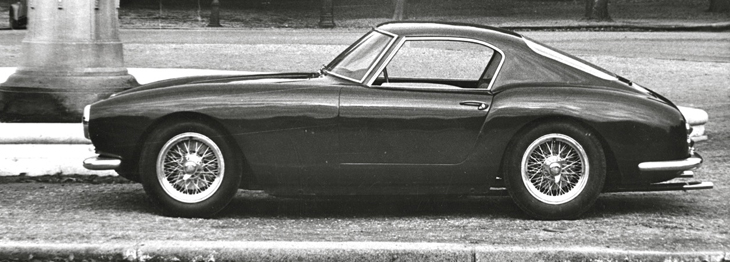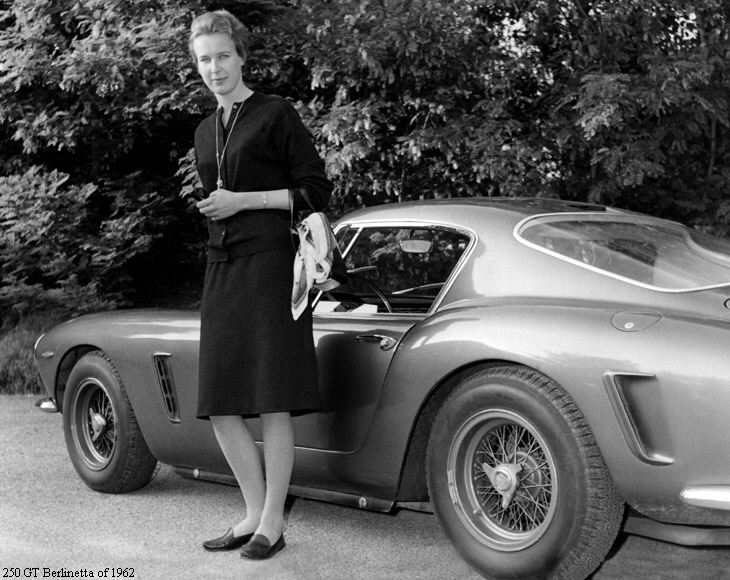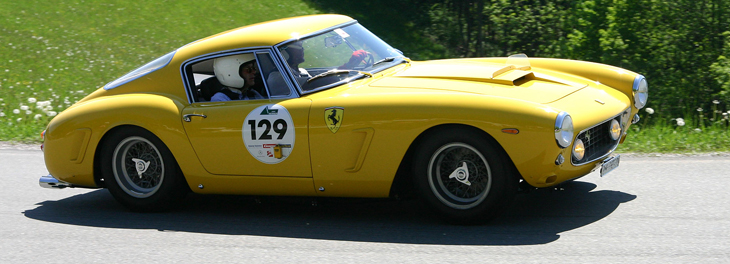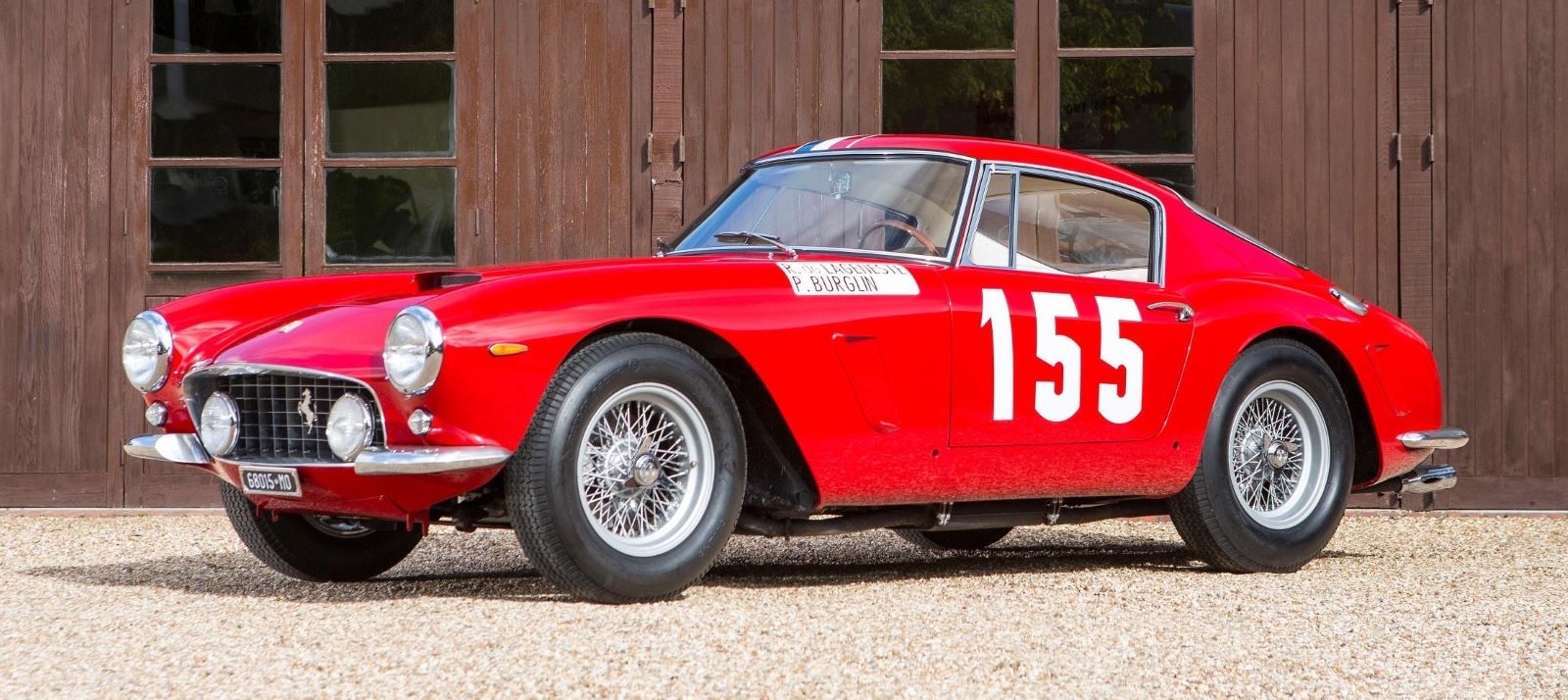
1959 Ferrari 250 GT Berlinetta (Short Wheelbase)
The 250 GT Berlinetta passo corto model’s unveiling at the 1959 Paris Show, a Pinin Farina-bodied 250 GT and a Superamerica. Starting in 1959, a total of 166 250 GT Berlinettas were built, of which 92 were road-going, steel-bodied cars and 74 aluminium ‘Competizione’ versions
The 1960 version of the 250 GT Berlinetta was designed by Pininfarina and built at the Scaglietti works in Modena. It was first presented to the public at the 1959 Paris Salon, and bore a body style very similar to that of the late series (now termed ‘Interim’ to differentiate them) berlinettas produced during that year, apart from the omission of the quarter window in the sail panel behind the door glass.
The new model was built on a 2400 mm wheelbase chassis, with factory type reference 539, later 539/61. The designations ‘passo lungo’ or ‘LWB’ for the long-wheelbase 2600 mm chassis and ‘passo corto’ or ‘SWB’ for the short-wheelbase 2400 mm chassis, were later adopted to distinguish between the two series. The chassis construction followed the familiar practice of twin, large oval section longitudinal members, with substantial cross bracing and a rectangular section front cross member. Suspension was independent coil spring and wishbone at the front, with a rigid rear end featuring semi-elliptic leaf springs and radius arms to locate the axle, and hydraulic shock absorbers all round. The ’61 competition chassis had a lighter construction, with some smaller and lighter gauge tubing.
This model was the first Ferrari production road car to be fitted with disc brakes as standard and, unlike the preceding 250 GT Berlinetta series, was available in either left- or right-hand drive. It was also available in competition specification, with an aluminium body, lightweight interior trim, and the engine in a higher state of tune – or in ‘Lusso’ (luxury) road trim, when it was normally fitted with a steel body with aluminium opening panels. However, there was a great deal of overlap between the two basic specifications, depending upon a client’s specific wishes. Therefore, it is not unusual for some road cars to have full aluminium bodies and/or a higher state of tune engine. In 1961 the competition cars had even lighter bodies, more highly tuned engines and other changes, to maintain their competitiveness against a new challenger in the form of the Jaguar ‘E’ Type.
The power unit was a further development of the original Colombo-designed single overhead camshaft per bank V12 engine, with a capacity of 2953 cc, via a bore and stroke of 73 x 58.8 mm and factory type references 168B, 168, and 168 Comp/61, all with wet sump lubrication. The spark plugs were outside the vee of the block, with a bank of three twin choke Weber 38 DCN or 40 DCL/6 carburettors and Solex C40 PAAI carburettors also homologated, with a twin coil and rear of engine mounted distributor’s ignition system, to produce a claimed 220 to 280 bhp, dependent upon specification. Weber 46 DCF/3 carburettors were a further homologated option; these were used on the special 1961 competition engines, which together with bigger valves, special exhaust manifolds and other fine tuning details achieved the upper level of power outputs quoted above. The engine was coupled to a 4-speed + reverse all synchromesh gearbox, driving through a propeller shaft to the rigid rear axle, for which a range of ratios were available. The gearboxes of the competition cars had ribbed alloy castings, and the road cars normally had plain-faced cast iron casings.

The overall design changed very little during the three-year production run from 1960 to 1962. However, there are a number of detail differences that identify the period of production of a specific car. In the early months of production the front and rear wings sides were plain, as was the boot lid. There was an exhaust air slot in the top centre of the rear screen, and the sliding door windows had a pronounced downward curve to the top rear edge, whilst the front valance featured a pair of rectangular slots to cooling ducts for the front brakes. The cars produced from around the middle of 1960 featured vertical angled exhaust air slots on the front and rear wings, which had a trim surround on three sides, and teardrop-shaped indicators on the front wings. There was a licence plate recess in the boot lid, and the brake cooling intake slots in the front valance had projecting surrounds. The late 1960 examples were very similar, apart from the cabin exhaust air slot moving from the rear screen to a recess in the trailing edge of the roof, and either sliding or wind-up door windows were available. If the latter option was specified, opening quarter lights were normally provided. All examples produced up to this point had an external fuel filler cap, located in a cut-out in the top left corner of the boot lid. The main visual differences between the 1960 examples and those after 1961 were in the shape of the door windows, which had a straighter top edge, and the relocation of the fuel filler cap, which was either on the left rear wing or hidden within the boot. There were also myriad smaller differences, like a slightly larger radiator grille and slight re-profiling of the rear wing shape, jacking point locations etc., together with individual customer styling, but the foregoing items identify the main differentiating features of the series.
Apart from the normal berlinetta body, there were some one-off designs, mainly by Pininfarina in a style similar to that of the 400 Superamerica, including a cabriolet with a removable hard top, on chassis number 1737GT. Their ‘400SA’ coupé-bodied examples comprised two road versions on chassis 2613GT and 3615GT, plus two lightweight competition examples on chassis 2429GT and 2643GT. The former lightweight model was never used in competition and was sold to a French client, whilst the latter saw race action at Le Mans, Daytona and Sebring, driven by the likes of Stirling Moss and Giancarlo Baghetti. Bertone produced two designs, the first in 1960 on chassis 1739GT (unusual in that it featured cast alloy wheels) and another in 1961, featuring the ‘Chiti’ shark nose look, on chassis 3269GT. There was also a one-off ‘Spider Speciale’ by Zagato. These offerings from Bertone would be the last designs by any carrozzeria, other than Pininfarina, to officially grace a Ferrari chassis for a number of years. During the sixties and into the seventies various examples received one-off bodies, but these were re-bodies of existing cars, as opposed to a bare chassis from the factory.
In competition, the ‘passo corto’ berlinetta continued the success of the ‘passo lungo’ model, with three consecutive wins in the Tour de France between 1960 and 1962. It also won the Tourist Trophy at Goodwood in 1960 and 1961, the GT category at Le Mans in 1960 and 1961, and the Nürburgring 1000 km in 1961 and 1962. These are just a few of the numerous class and overall wins achieved during its reign as queen of the GT category.
Engine
- Type front, longitudinal 60° V12
- Bore/stroke 73 x 58.8 mm
- Unitary displacement 246.10 cc
- Total displacement 2953.21 cc
- Compression ratio 9.2 : 1
- Maximum power 206 kW (280 hp) at 7000 rpm
- Power per litre 95 hp/l
- Valve actuation single overhead camshaft per bank, two valves per cylinder
- Fuel feed three Weber 40 DCL/6 carburettors
- Ignition single spark plug per cylinder, two coils
- Lubrication wet sump
- Clutch single-plate
Chassis
- Frame tubular steel
- Front suspension independent, unequal-length wishbones, coil springs, hydraulic shock absorbers
- Rear suspension live axle, radius arms, semi-elliptic springs, telescopic shock absorbers
- Brakes drums
- Transmission 4-speed + reverse
- Steering worm and roller
- Fuel tank capacity 120 litres
- Front tyres 6.00 x 16 or 175 x 400
- Rear tyres 6.00 x 16 or 175 x 400
Bodywork
- Type two-seater berlinetta
- Wheelbase 2400 mm
- Front track 1354 mm
- Rear track 1349 mm
- Weight 960 kg (dry)
Performance
- Top speed 268 km/h







You must be logged in to post a comment.